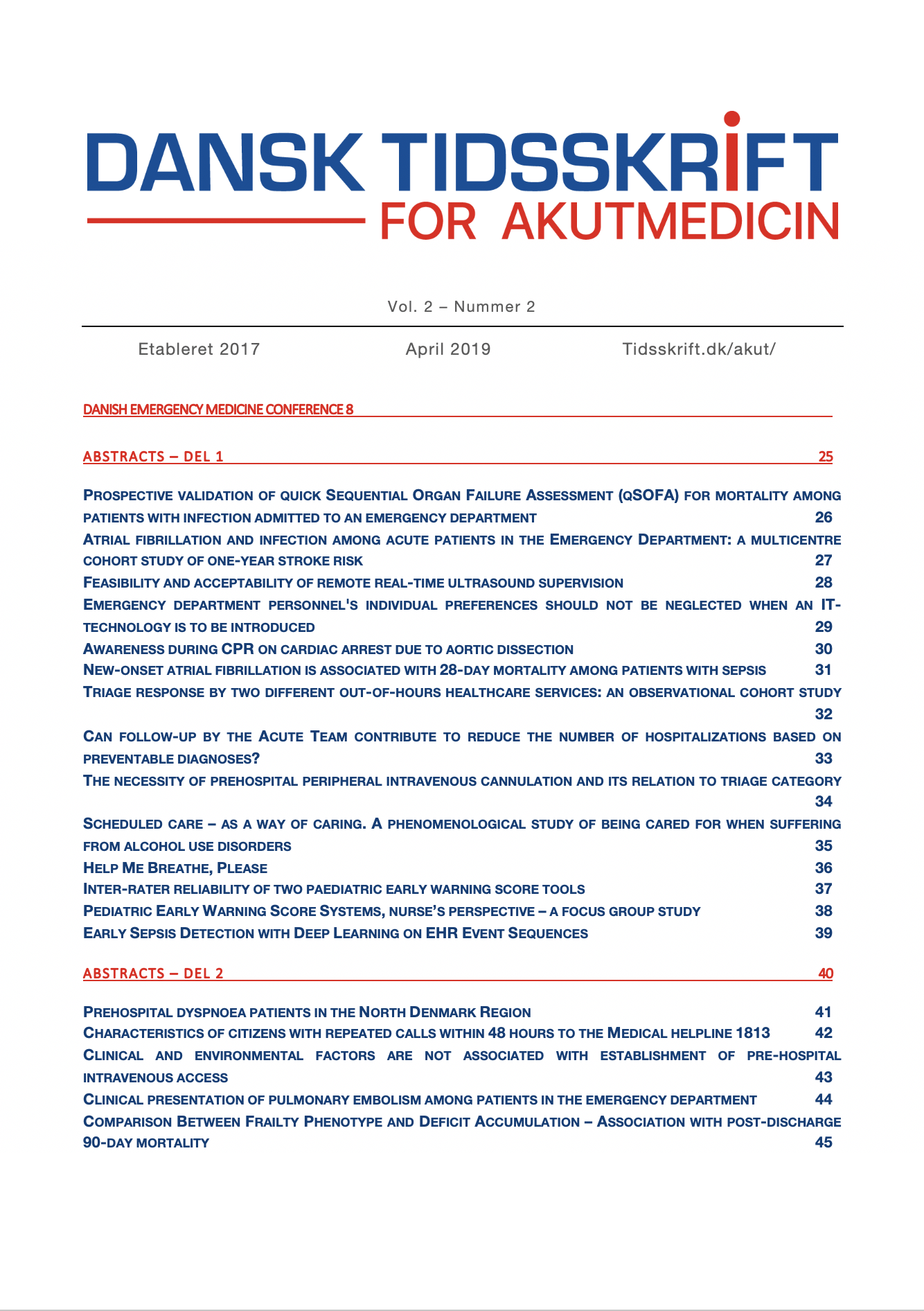Resumé
Background: In the Capital Region of Denmark, the Medical helpline 1813 is integrated in the Emergency Medical Services, where citizens are triaged to receive face-to-face consultation (e.g. emergency department) or telephone consultation. Approximately 4,0 % of the calls received are repeated calls < 48 hours, representing citizens with progression in symptoms or an unmet need for help during the initial call, witch potentially may lead to delay in triage to face-to-face consultation, examination and treatment. We aimed to identify differences in sociodemographic and health related characteristics between citizens performing single calls compared to citizens performing repeated calls < 48 hours.
Methods: The authors used data from the prospective observational Degree-of-worry study, conducted from the Medical Helpline 1813 from 18 January - 9 February 2017, including citizens performing single calls (n=11.131) and citizens performing repeated calls (n=464), defined by < 48 hours between calls. Information on callers were collected from the Medical Helpline electronic records, Statistic Denmark Registers and the National Patient Register. Self-reported characteristics as self-rated health (SRH scale 1-5) and Degree of worry concerning the actual situation (DOW on scale 1-3) were collected at the initial call. The authors performed logistic regression analyses, calculating Odds Ratio (OR) and 95% Confidence Intervals (CI).
Results: Seven variables were significantly associated with repeated callers: Age > 65 OR=1.58 (95% CI=1.18-2.10), immigrants OR=1.41 (95% CI=1.03-1.93), annual income in highest quartiles OR=0.69 (95% CI=0.54-0.89), high DOW OR=1.33 (95% CI=1.06-1.66), pore SRH OR=1.64 (95% CI=1.21-2.21) and > 2 comorbidities OR=1.66 (95% CI=1.26-2.19). Gender and time of call were not significantly associated with repeated callers. The significant association remained in analyses adjusted for age and gender. In the mutual adjusted analyzes the disproportions decreases.
Conclusion: Results identify disproportions between repeated callers and single callers in characteristics related to age, immigrants, income, comorbidities and the self-rated variables SRH and DOW. This indicates that these characteristics potentially could be determinants for a delay in a face-to-face examination and treatment for citizens performing repeated calls. However, these disproportions are decreased in the mutual adjusted analyzes, indicating that sociodemographic and health related characteristics have a reinforcing effect.
Licenseret under en Creative Commons Kreditering 4.0 International-licens (CC BY 4.0).
© Forfatterne.

